- What is review management?
- Why review management is important for building reputation?
- Benefits of consistent review management
- 5 pillars of successful review management
- Top platforms for online review management
- 6 best practices for review management
- Top brand stories excelling in review management
What is review management?
Review management is the process of monitoring customer reviews posted about your brand on websites, social media and other sources. Every business, regardless of its size, should actively monitor, analyze and respond to all its reviews.
An efficient customer review management strategy can help you tackle negative (and fake) reviews and promote positive ones to build a favorable brand image.
Let’s understand how review management works with the help of an example:
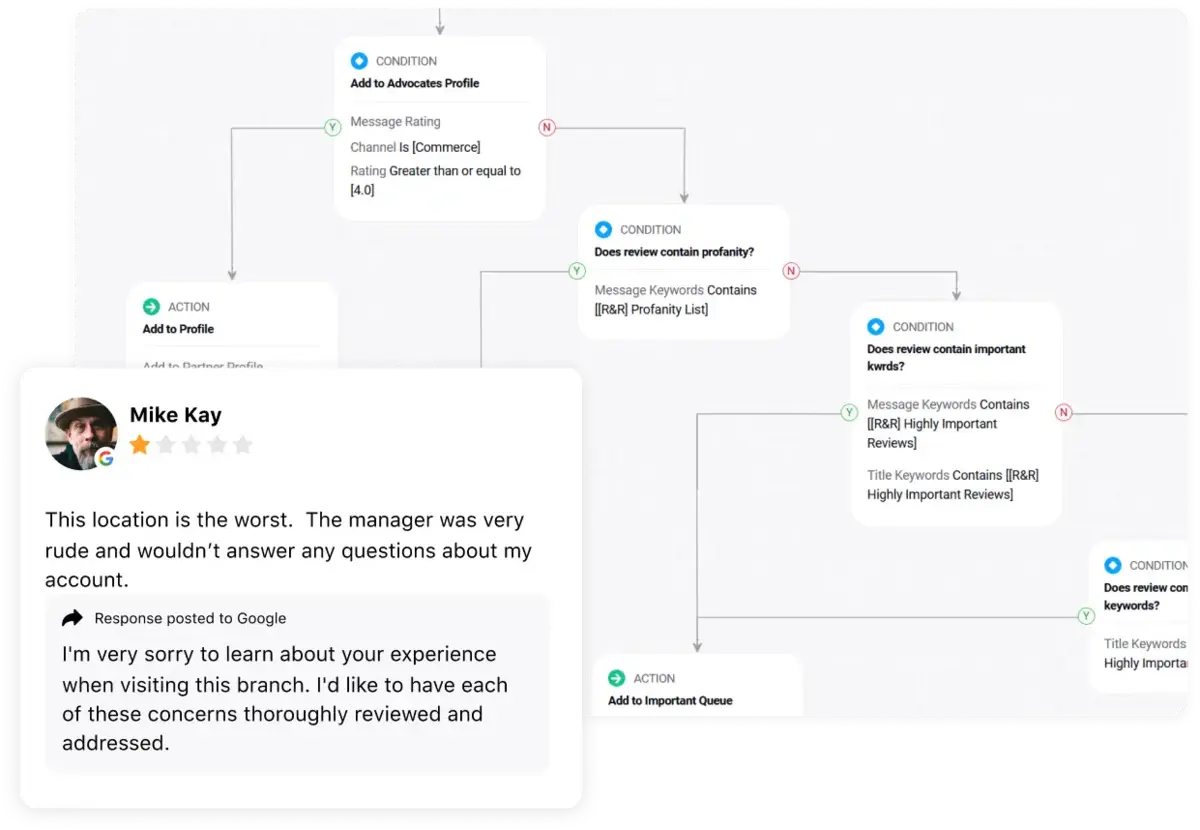
A user posted a negative review on Google explaining his dissatisfaction with a brand. And the brand, rather than neglecting him, respectfully responded to his review and acknowledged and apologized for its mistake. Through its thoughtful response, the brand successfully addressed an angry customer, turned an awkward moment into a positive one and upheld its brand image.
Why review management is important for building reputation?
In today's digital world, your reputation matters a lot, whether you're a solopreneur or a large business.
One vital aspect of managing your reputation is handling customer reviews. It means keeping an eye on what people say, responding when needed and using those reviews to build a good brand image.
Benefits of consistent review management
Here are some of the benefits of managing your reviews diligently.
Influencing trust and perception: Customer perception and trust go hand in hand with reviews. They reflect real experiences with your brand. Positive reviews build trust and credibility, while negative ones can harm them. Review management lets you shape this perception by highlighting the positive and handling negative feedback promptly.
Informed decision-making: In today's information-driven world, consumers often research products or services online before making a purchase decision. Reviews play a crucial role in this process. By managing reviews effectively, you ensure that potential customers have access to accurate and balanced information, which can lead to more informed decisions in your brand's favor.
SEO benefits: Search engines like Google consider customer reviews as a ranking factor. Brands with a higher volume of positive reviews tend to rank higher in search results. Effective review management not only boosts your online reputation but also enhances your visibility, driving more organic traffic to your website.
Feedback for improvement: Customer reviews provide valuable insights into what your brand is doing well and where there's room for improvement. By actively managing reviews, you can gather feedback, identify pain points and make necessary adjustments to improve your products or services.
Competitive advantage: Positive reviews can set you apart from competitors. When consumers compare similar products or services, they often rely on reviews to make their choice. If your brand consistently receives positive feedback, it can become a competitive advantage that attracts more customers.
Building brand advocates: Satisfied customers who see their feedback acknowledged become loyal advocates, supporting and recommending your brand, thereby enhancing your positive reputation.
Read More: How should brands manage their online reputation
5 pillars of successful review management
Now let’s look at the five key pillars for effective review management.
1. Review generation
Review generation is just what it sounds like — asking instead of waiting for your customers to leave reviews. It's a strategy where you actively encourage and collect reviews, whether on your website or on other online platforms where people share their thoughts about your products or brand online. Getting a customer to write you a review is not that hard. When people buy from you, just ask them to share their experience. Most people expect this, so they're usually happy to oblige. But you have to be smart about it, like when and how to ask, especially if you're just starting. In the beginning, focus on getting more reviews. It doesn’t matter if they’re brief.
Emails are a common way to make your request. But be sure to come up with a catchy subject line otherwise your email could be lost in the inbox clutter.
If you're having trouble getting genuine reviews, consider offering rewards or special deals. But be careful because some websites have policies that discourage this practice.
Another strategy is sending free samples of your product in exchange for reviews. Think of it as giving your customer a taste of your offering to entice them to provide feedback.
Running a business is time-consuming. So, consider using apps to automate review requests. They can help you get lots of reviews quickly without considerable effort.
Generating a steady stream of reviews not only increases your brand's visibility but also provides a diverse range of opinions and insights about your products or services.
2. Review monitoring
Customers often check reviews before making a purchase. And businesses that interact with and respond to these reviews tend to win more customers. However, it involves more than just monitoring the popular review sites.
Sometimes, these reviews stay hidden within lesser-known or industry-specific sources that can make or break your reputation. That's where a social media monitoring tool comes to the rescue. It helps you collect and handle every review, no matter where it's published.
Monitoring your online presence is important for promptly addressing negative comments and maintaining a positive image. With the help of review management software, you gain access to useful features, such as page statistics, and improve your SERP ranking.
If a brand doesn’t have specialized software to manage its reputation online, manual monitoring is an option. This could mean setting up Google Alerts, performing a Google search or even combing through review sites regularly. Alternatively, social listening tools like Sprinklr can be used to track online mentions.
If you want to keep a close eye on your reviews, especially when you're featured on a ton of review sites, using a solution like Sprinklr’s reputation management software can really help. Also, you can get creative to get more reviews. For instance, you can put review links in your email signature, ask for reviews on social media or even have a review station at your place of business to make it easy for customers to leave their feedback.
3. Review responses
Responding to reviews isn't just about saying “thank you” — it should show that you care about your customers. When you address both positive and negative reviews quickly, it helps build trust and can turn unhappy customers into fans. Plus, actively responding to reviews can improve your brand’s SERP ranking.
For the best responses:
Respond promptly to reviews.
Personalize each response — address reviewers by their name (if available) and tailor responses to the specific feedback they provided. Avoid using generic, automated responses.
Start by thanking the reviewer for their feedback, whether positive or negative. Acknowledge their time and effort in sharing their thoughts.
Maintain a professional and courteous tone in all responses, even when faced with criticism. Avoid getting defensive or confrontational.
Show empathy toward customers’ concerns. If they've had a negative experience, apologize and assure them you’ll do better next time.
For negative reviews, offer a viable solution or a way to address the issue. Ask for additional information if needed to resolve the problem.
Keep your responses concise and on point.
Remember that responding to positive reviews is equally important. Express your appreciation, and if relevant, share additional information about your products or services.
Interesting Read: How to respond to customers on social media: Examples of how to do it right
4. Review presentation
When it comes to review presentation, how you present them can make a big difference. Here are some ways you can effectively showcase customer feedback:
Start by categorizing reviews. You can group them by product, service or any other relevant criteria. This helps you spot trends and identify areas for improvement.
Don't hesitate to highlight your five-star reviews. These positive endorsements can convince more people to choose your brand and show everyone that you're a trusted choice.
Dedicate a section on your website or social media platforms to display reviews. Make it simple and easy for visitors to find and read what others are saying about your brand.
Use visuals to make your reviews more engaging and credible. Include images or videos where applicable.
Most review platforms provide widgets for your website. These widgets let you display your latest reviews with ease by copying and pasting a code snippet onto one of your site's pages.
Use a tool like reputation manager to easily share your best reviews with site visitors. It keeps your reviews fresh and ensures potential customers see your latest positive feedback.
While less efficient, manually adding your favorite reviews to your website is also an option. However, this method requires regular upkeep to keep your showcased reviews current.
Following the above best practices will ensure your reviews help increase conversions by showing consumers that they can trust and rely on your brand.
5. Review analysis
Review analysis is an important part of managing your online reputation. It involves assessing customer feedback to gain deeper insights that can help you improve your business and enhance customer satisfaction.
Start by categorizing reviews into different themes or topics. Look for recurring issues or praise in customer feedback. This helps identify areas that need improvement or highlight strengths to build upon.
Next, carry out a thorough sentiment analysis. Determine whether reviews are generally positive, negative or neutral. Understanding user sentiment can help you gauge overall customer satisfaction and identify potential issues that require immediate attention.
Identify trends and patterns in your reviews. Are there specific products or services that receive more praise or complaints? Are there common keywords or phrases that customers frequently mention? These insights can inform your business strategy and marketing efforts.
Lastly, monitor your competitors' reviews. Analyzing their strengths and weaknesses can help you identify opportunities to differentiate your business and meet customer needs more effectively.
Read More: Your social media competitor analysis guide for 2023 and beyond
Top platforms for online review management
Now that you have a fair idea of how review management should be done, let's explore some popular platforms that simplify the process.
Sprinklr — the unified review management software
Sprinklr’s review management software, powered by advanced AI, brings your brand’s online ratings and reviews from 30+ digital channels together under one unified dashboard, enabling you to respond to those reviews and develop a meaningful connection with your customers.
Here’s how Sprinklr can help make online review management simple and effective:
Filter reviews by analyzing sentiment, ratings, keywords, products and various customizable fields and then instantly route them to the right person
Automate workflows and reduce the impact of negative reviews by responding immediately
Leverage data-driven insights to inform your strategy and improve customer experience and satisfaction
Share positive reviews from Facebook, Google Business Profile, Bazaarvoice and other online platforms across 30+ digital channels to boost customer engagement and conversions
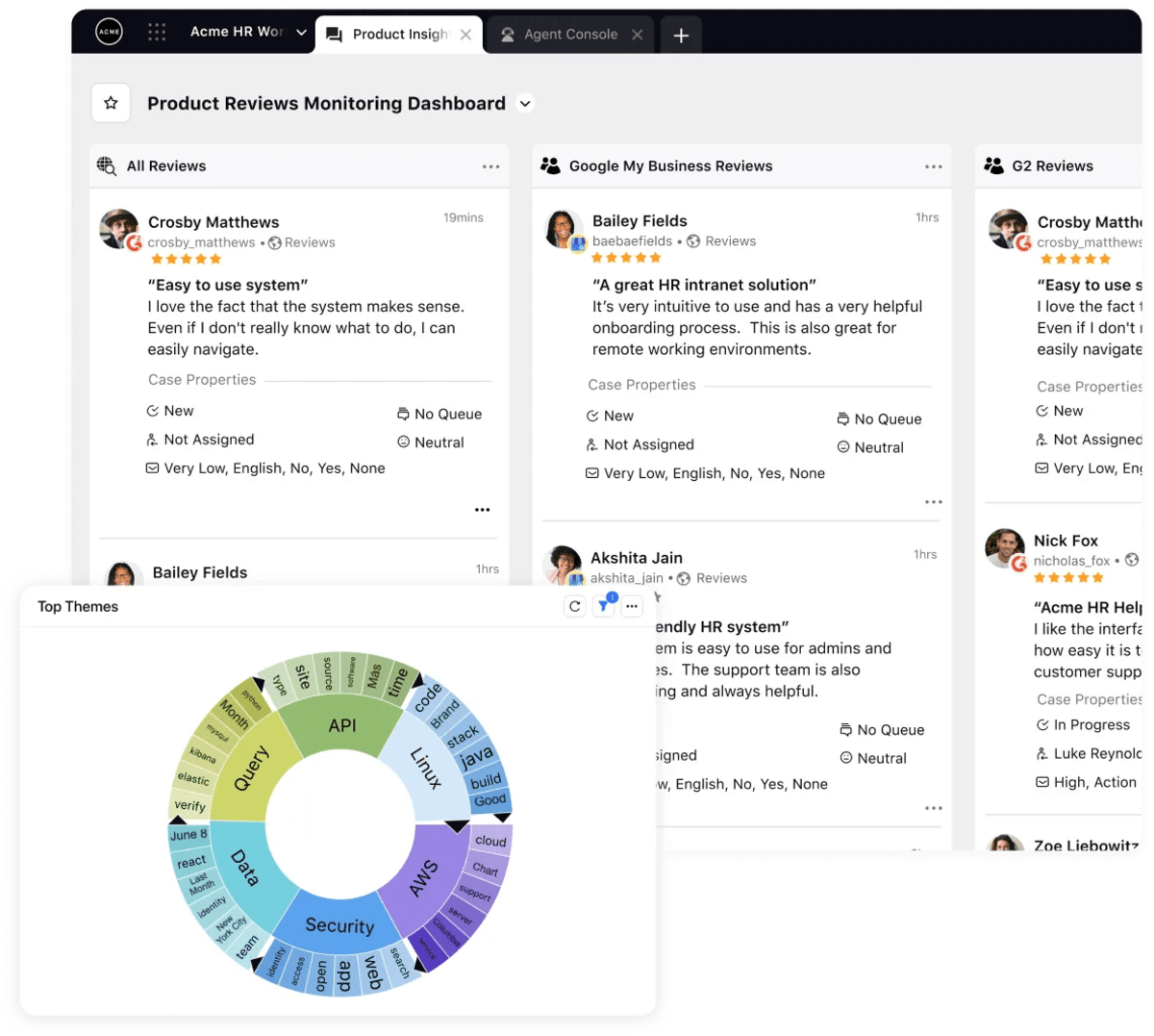
Yotpo
Yotpo is a popular platform for small and large businesses to handle customer reviews. It makes it easy to ask customers for their feedback through emails or text messages. You can then use this feedback to make your products and services better.
Yotpo offers useful features like customizable review requests, automatic spam checks, social media integration and a dashboard to see how things are going. Using it helps build trust with your customers, boost website sales and improve your online reputation.
Podium
Podium is a handy review tool that uses text messages to help you manage your customer relationships and online reputation. It brings all your customer interactions and reviews into one dashboard, making it easy to keep track of them. You can invite customers to leave reviews, respond to reviews right away and chat with customers via text messages.
Podium also provides reports on your business and even shows you how you compare to your competitors. Plus, they have a mobile app for convenience.
Trustpilot
Trustpilot is an online reputation tool that works well for medium to large online businesses. It's all about connecting with customers and building trust.
With Trustpilot, you can collect, manage and show customer reviews to boost your sales and stand out in search results. It's great for local businesses too. You can handle both positive and negative reviews, plus create widgets to highlight impactful reviews that best represent your brand. They also offer a good analytics dashboard to monitor your reviews and brand reputation online.
EmbedSocial
EmbedSocial helps businesses manage their online reputation effortlessly.
You can handle your existing reviews, gather new ones and display them on your website. You can even make cool widgets out of your reviews that look great on all devices. It's super useful for Google reviews and automatically connects your Google and Facebook accounts to generate and show reviews. You can also respond to reviews manually or use automated responses. Plus, you can collect reviews through web forms or messages, and it helps improve your SERP ranking, bringing more traffic and boosting sales.
Reputation.com
Reputation.com is a cloud-based platform that gathers customer feedback from various places like social media and review sites and then it analyzes this feedback using tools that understand how customers feel. This helps you fine-tune your product road map. The platform also lets you track your brand on Google and Facebook, compare how you're doing against competitors and gather real-time updates on customer reviews and feedback.
6 best practices for review management
Here are six tips for managing reviews like a pro. These easy-to-follow practices will boost your online reputation and customer satisfaction.
Prompt and personalized responses
Respond to reviews, both positive and negative, in a timely manner. Address reviewers by name and mention key points from their feedback to show that you value their input.
Gratitude and professionalism
Express gratitude for reviews, regardless of their tone. Maintain a professional and respectful tone in your responses, and avoid being defensive
Empathy and problem resolution
Show empathy toward customers who've had negative experiences and offer tailor-made solutions to address their concerns. Follow up to ensure satisfaction after resolving issues.
Consistency and templates
Use consistent responses by developing templates that can be customized for different situations while maintaining your brand voice.
Continuous monitoring and learning
Monitor review platforms regularly to stay up-to-date. From the gathered insights, identify areas for improvement and make data-driven decisions.
Encourage reviews and competitor analysis
Actively encourage satisfied customers to leave reviews. Monitor competitor reviews to learn from their strengths and weaknesses, gaining valuable insights into industry trends and customer expectations.
Top brand stories excelling in review management
Let's look at some real-world examples of how top brands are acing their review management game. Learn from these success stories the effective strategies these brands use to stay ahead.
Amazon
Amazon proactively sends follow-up emails to customers after their purchase, encouraging them to leave their feedback through reviews. It employs advanced machine learning and AI algorithms to analyze reviews for sentiment and product improvement. For instance, it invites trusted reviewers to join its Vine program, providing early access to products in exchange for honest reviews.

Apple
Apple maintains a strong presence on social media platforms like X (formerly known as Twitter) and Facebook, where it actively engages with customers, addressing questions and concerns. Its website and customer support channels include feedback submission forms for customers to provide input and suggestions.
Apple also offers beta programs for software and products, allowing users to test and provide feedback before public release.

Airbnb
Airbnb integrates its review system directly into the booking process, making it easy for both hosts and guests to leave reviews. It encourages open communication between hosts and guests, fostering trust and encouraging feedback.
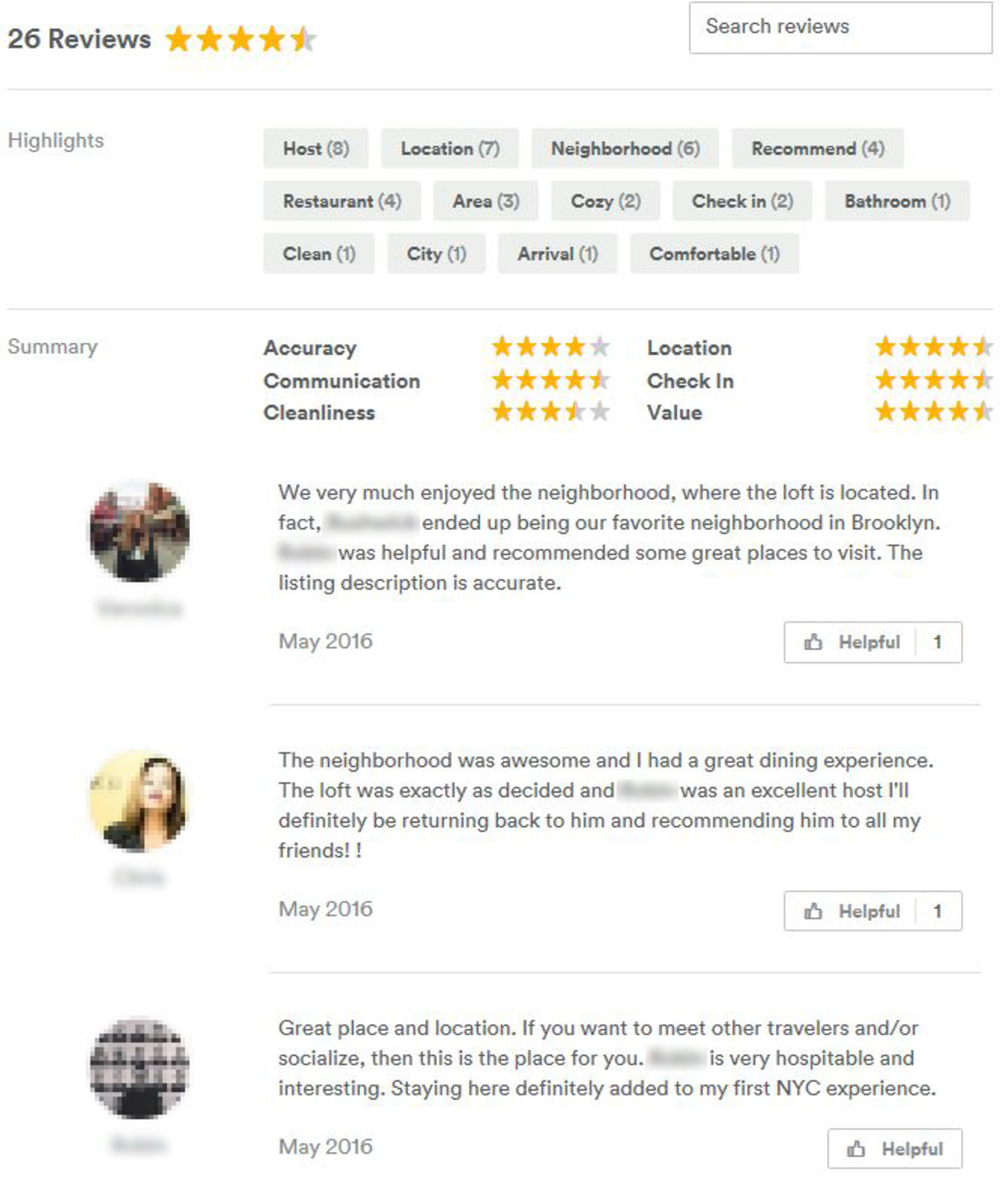
Tesla
Tesla CEO Elon Musk personally engages with customers and enthusiasts on X, often addressing their concerns, feedback and suggestions. The team hosts official forums where owners and fans can discuss their experiences, provide feedback and connect with other community members.
Tesla leverages data analytics tools to extract insights from customer feedback and reviews to inform its product roadmap.
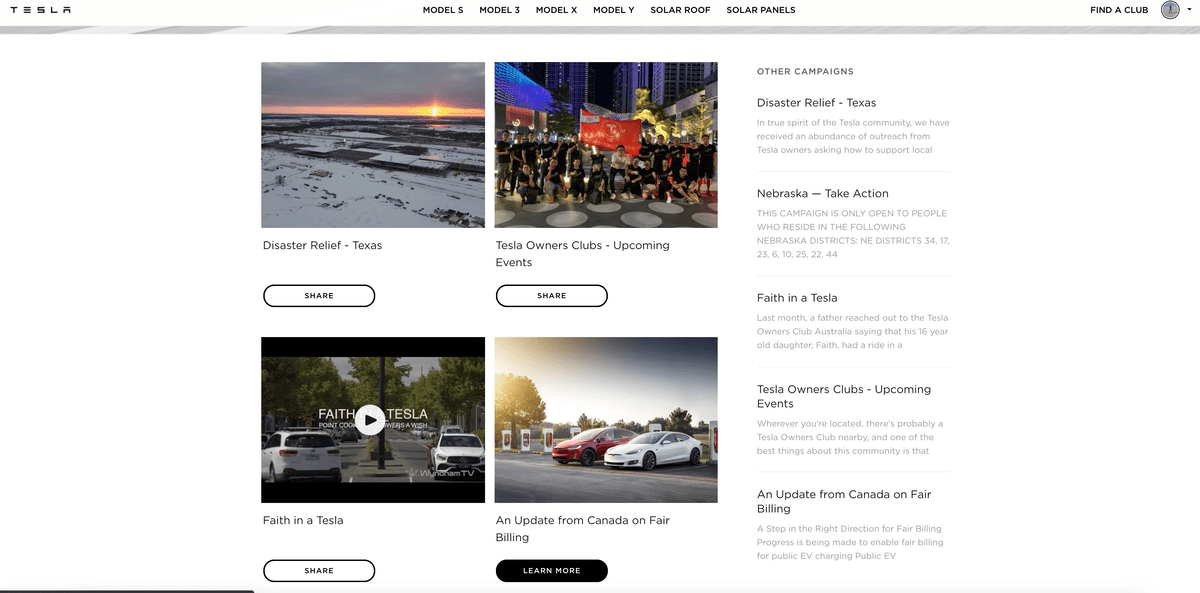
Zappos
Zappos is known for its top-notch customer service. It engages with customers via 24/7 live chat, phone and email, resolving issues promptly. It actively responds to product reviews and questions on its website. And it provides additional product information and sizing advice.
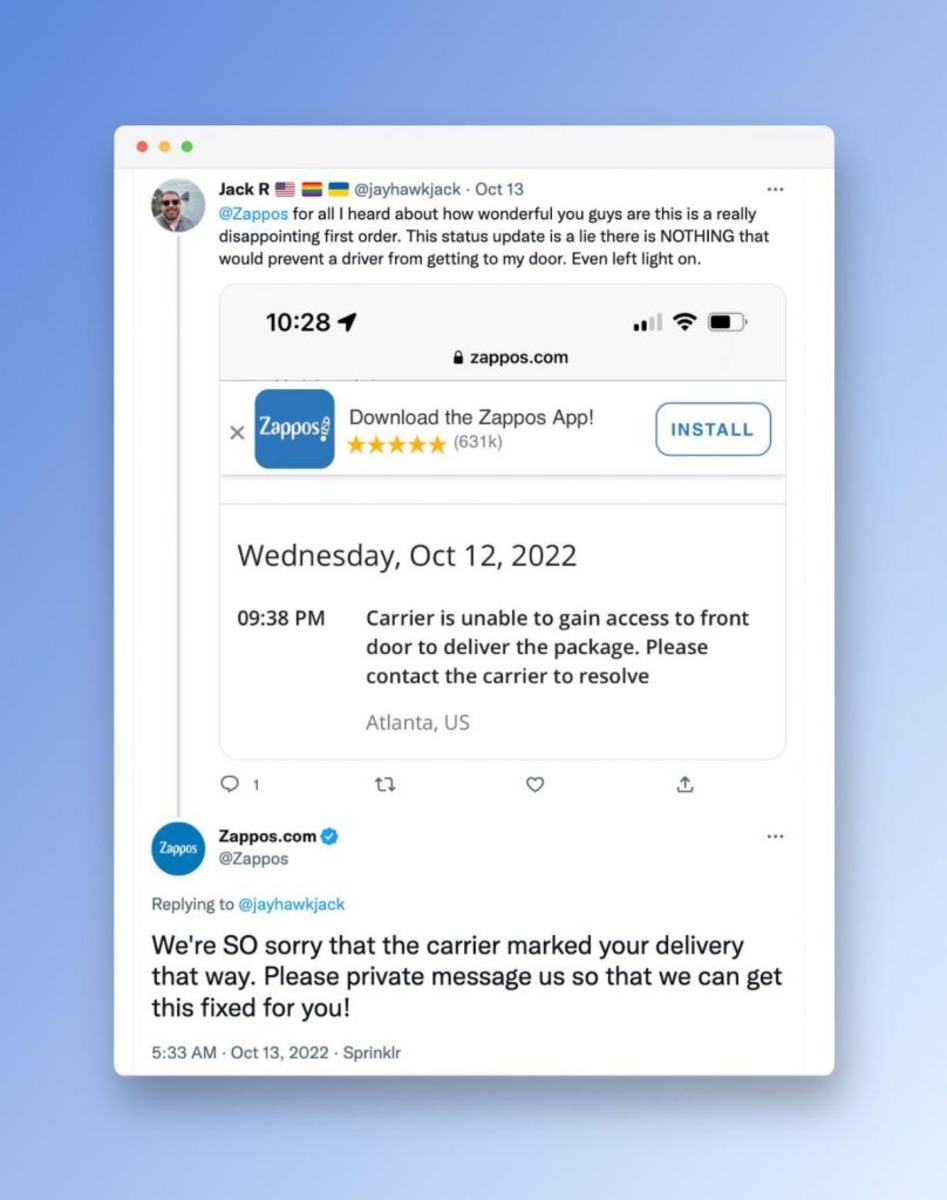
Final thoughts
Through the world of review management remember that your customers' voices matter. By embracing best practices, leveraging the right tools and drawing inspiration from successful brand stories, you'll be equipped to make the most of your online reviews.
It's not just about watching from the sidelines — it's about joining the conversation and turning feedback into business gold.
Frequently Asked Questions
Thank you for contacting us.
A Sprinklr representative will be in touch with you shortly.
Contact us today, and we'll create a customized proposal that addresses your unique business needs.
Request a Demo
Welcome Back,
No need to fill out any forms — you're all set.
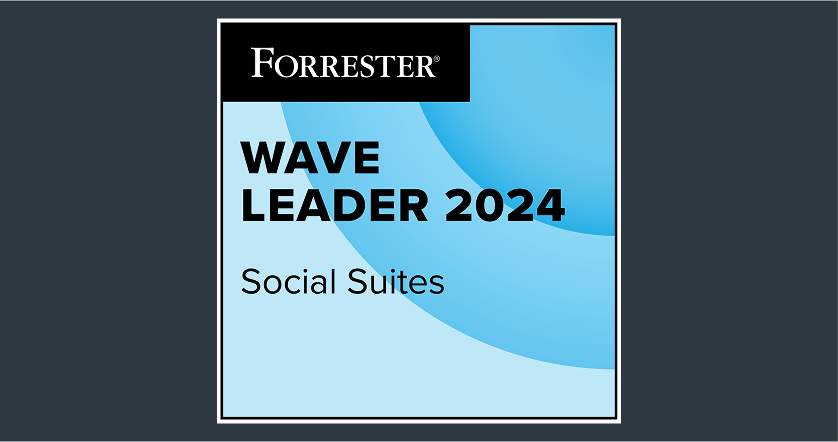
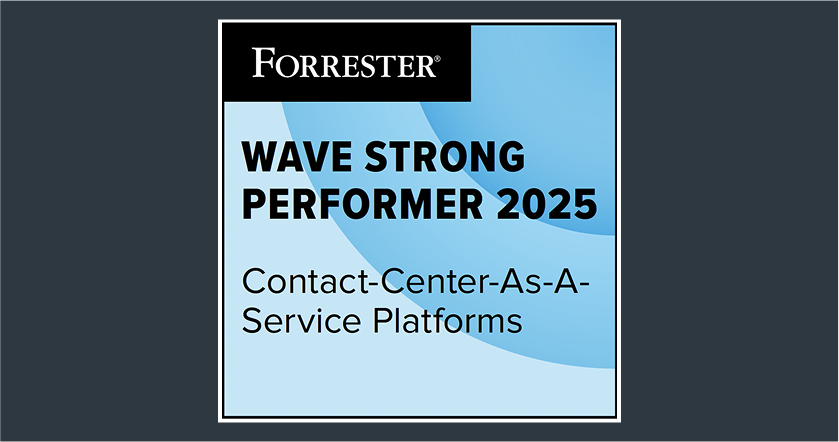

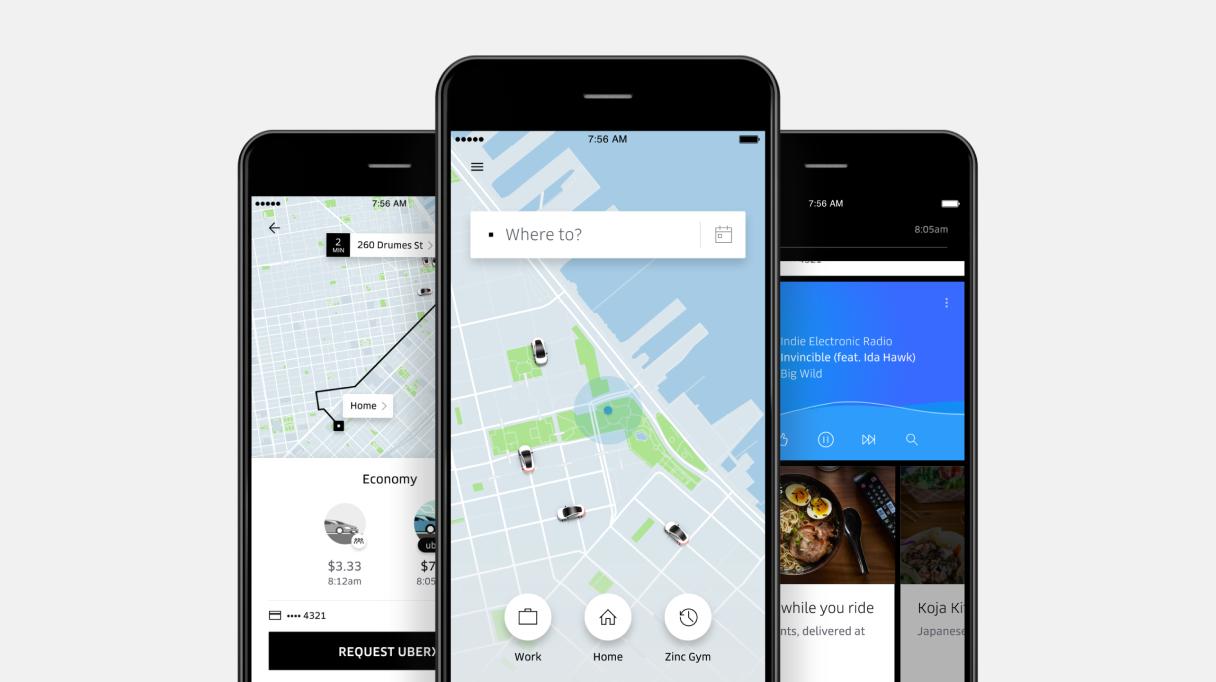




![The Best Time to Post on LinkedIn [By Days & Industry]](https://images.ctfassets.net/ukazlt65o6hl/dwAyaQmzYQJRQGd34YkeR/8ea930b229b90a4d3b7d6521a2272ff3/Banner_image.jpeg?w=750&h=428&fl=progressive&q=70&fm=jpg)